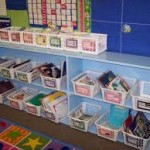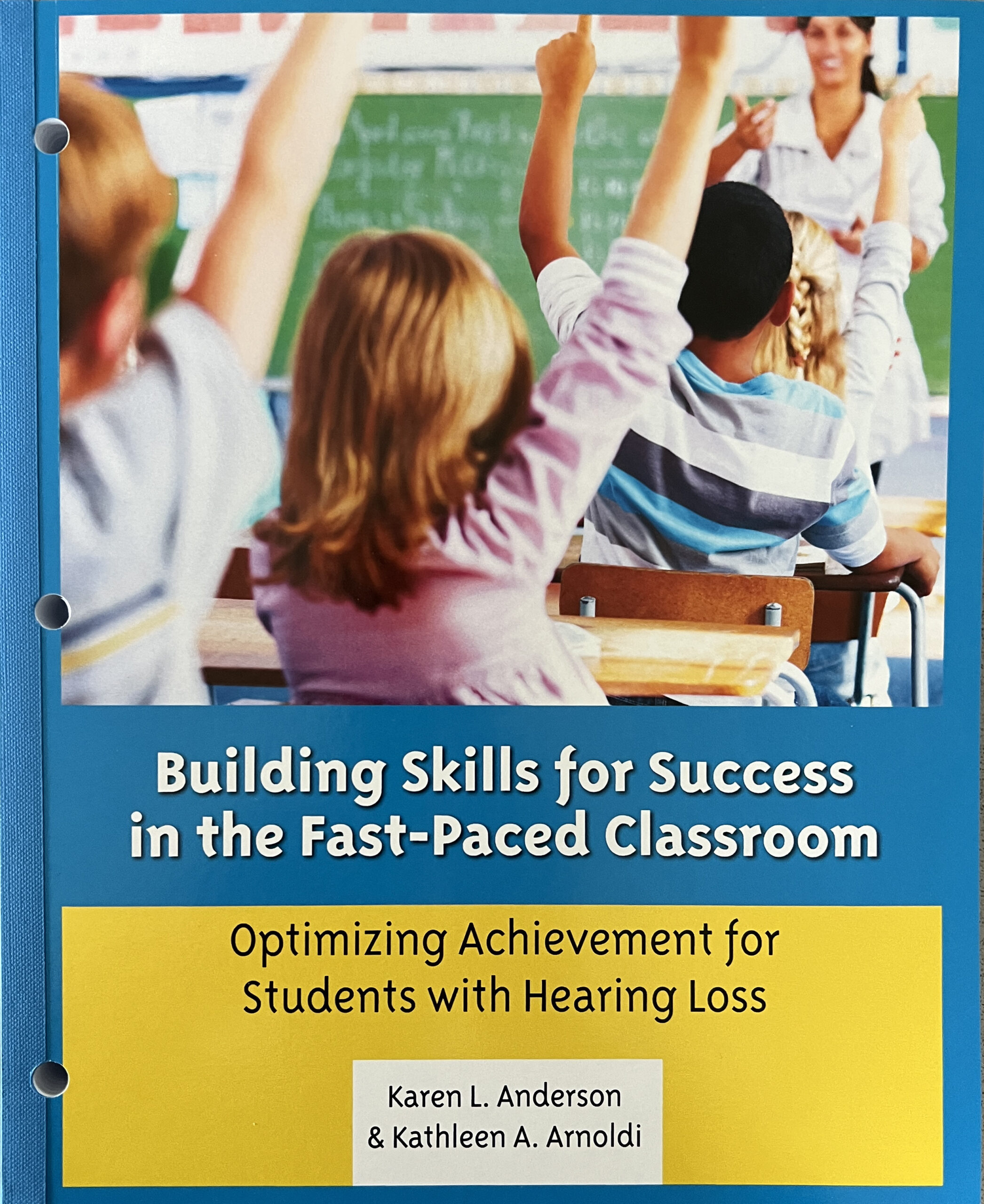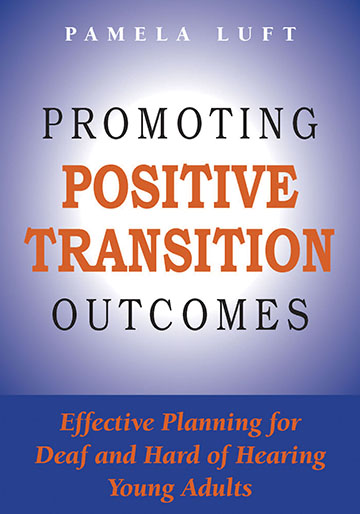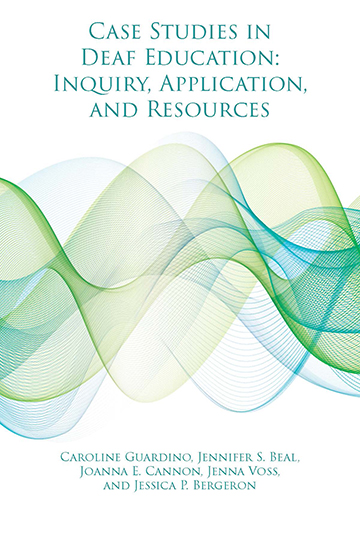Related Products
For Professionals
- Amplification
- Assessment of Student Skills, Challenges, Needs
- Early Childhood: Infants, Toddlers, Preschool
- Hearing Loss – Identification, Impact and Next Steps
- IDEA Law Summary Information
- Language and Speech Development Issues
- Legal Issues in Serving Children with Hearing Loss
- Listening (Auditory Skills) Development
- Planning to Meet Student Needs
- Self-Advocacy Skills for Students with Hearing Loss
- Self-Concept: How the Child with Hearing Loss Sees Himself
- Social Skills
- Speech Perception & Learning
Related Teacher Tools Takeout Items
Emailable Tips for Preschool and Kindergarten Teachers
(to be used in addition to generic list found here)
Printable version of Emailable Tips for Teachers – Specific Early Childhood Tips
Monica Cegelka has worked with students with hearing loss for over 25 years, most of them spent as an itinerant teacher helping to support hearing impaired students (and family and staff) who attend school in their home district. She is employed by CREC Soundbridge in Connecticut.
These early school-age tips were developed as a way of reinforcing and adding more detail to information presented at the school’s staff fall workshop. Early school-age children must have the opportunity to develop listening and language skills all waking hours, and these tips provide helpful strategies to assure the best possible acoustic learning environment.
Monica uses a group e-mail to send out one tip a week to the staff (including paraprofessionals), administrator, and parents. The memo line reads “your student with hearing loss.” Teachers are told to hit “reply” to ask any questions or report any concerns they may be having. Not all tips apply to all students and some may need to be modified for individual needs. Generic tips (also available on the website), as appropriate, are also sent in conjunction with the early school-age children tips.
Recipients have reported that getting one tip at a time has been an effective strategy for implementation. Focusing on one strategy each week reduces anxiety and results in an improvement in best practice techniques for their students with hearing loss.
Tip 1
 You are receiving this e-mail because you have a student with hearing loss in your class.
You are receiving this e-mail because you have a student with hearing loss in your class.
NOTE: It is of the utmost importance for the young school-age child to be wearing amplification/listening devices all waking hours (in and out of school/daycare)
This week’s tip is:
- You are a very big link in the chain of people supporting your student with hearing loss in her quest to become the best listener, language user, advocate and learner she can be. The weekly tips you will be receiving are suggestions on how to better address her needs relevant to her hearing loss. It is not meant to stifle your individual style or creativity; rather, it is meant to support you in creating an educational setting in which a child with hearing loss has the best possible opportunity to succeed using audition and spoken language.
Thank you for all that you do to help support your student with hearing loss.
Tip 2
You are receiving this e-mail because you have a student with hearing loss in your class.
NOTE: It is of the utmost importance for the young school-age child to be wearing amplification/listening devices all waking hours (in and out of school/daycare)
This week’s tip is:
- When you are using the FM, a “U” seating arrangement (when practical) with the student with hearing loss sitting at the top of the curve of the U is best practice for preferential seating. A circle works too. When working with the child individually, try sitting next to her to challenge her by reducing visual cues from speechreading and having her focus on listening. If you are using FM, be sure that you have correct mic placement. If no FM is being used, speak at the child’s ear level and as close to the hearing aid or cochlear implant as possible (about 6 – 8 inches away is ideal).
OR
- compose your own instructions based on your student’s needs
Thank you for all that you do to help support your student with hearing loss.
Tip 3
You are receiving this e-mail because you have a student with hearing loss in your class.
NOTE: It is of the utmost importance for the young school-age child to be wearing amplification/listening devices all waking hours (in and out of school/daycare)
This week’s tip is:
- Because little ones are still learning to listen, they may not report or even recognize problems with their amplification. Batteries, for example, can go dead. Your school needs a trained troubleshooter to perform a daily listening check to catch and fix problems with amplification or to troubleshoot with an expert via the phone.
Thank you for all that you do to help support your student with hearing loss.
Tip 4
 You are receiving this e-mail because you have a student with hearing loss in your class.
You are receiving this e-mail because you have a student with hearing loss in your class.
NOTE: It is of the utmost importance for the young school-age child to be wearing amplification/listening devices all waking hours (in and out of school/daycare)
This week’s tip is:
- Do not assume your student with hearing loss has your auditory attention. Call her name (several times may be needed depending on noise level and listening experience) and wait for eye contact before you begin your interaction.
Thank you for all that you do to help support your student with hearing loss.
Tip 5
You are receiving this e-mail because you have a student with hearing loss in your class.
NOTE: It is of the utmost importance for the young school-age child to be wearing amplification/listening devices all waking hours (in and out of school/daycare)
This week’s tip is:
- Your student with hearing loss is at risk for missing incidental information and details embedded in the message. Check often for comprehension by asking lots of Wh questions. (e.g. What color crayon are you supposed to use?) When you think your student can handle it, change one facet of your routine instruction to determine if your student with hearing loss noticed the novel information (e.g. Usually your directions state, “Line-up at the door.” Change the directions to, “Line-up at the water fountain.”)
Thank you for all that you do to help support your student with hearing loss.
Tip 6
You are receiving this e-mail because you have a student with hearing loss in your class.
NOTE: It is of the utmost importance for the young school-age child to be wearing amplification/listening devices all waking hours (in and out of school/daycare)
This week’s tip is:
- Children with hearing loss often need extra input to understand the thoughts and feelings of others. Use language like, “He’s thinking that…” and “She feels _______
because… “ to help your student with inferential thinking and point of view.
Thank you for all that you do to help support your student with hearing loss.
Tip 7
You are receiving this e-mail because you have a student with hearing loss in your class.
NOTE: It is of the utmost importance for the young school-age child to be wearing amplification/listening devices all waking hours (in and out of school/daycare)
This week’s tip is:
- One of the important bits of incidental knowledge that your student with hearing loss may miss is the names of her classmates. She may need an individual lesson to learn these and staff members’ names.
Thank you for all that you do to help support your student with hearing loss.
Tip 8
You are receiving this e-mail because you have a student with hearing loss in your class.
NOTE: It is of the utmost importance for the young school-age child to be wearing amplification/listening devices all waking hours (in and out of school/daycare)
This week’s tip is:
- The child with hearing loss may require more time to absorb and process language than his typically hearing peers. Give him time by counting to 5 and then requiring the correct response. If it is clear that the child did not understand, rephrase rather than repeat the information.
Thank you for all that you do to help support your student with hearing loss.
Tip 9
You are receiving this e-mail because you have a student with hearing loss in your class.
NOTE: It is of the utmost importance for the young school-age child to be wearing amplification/listening devices all waking hours (in and out of school/daycare)
This week’s tip is:
- Let the child with hearing loss rely on his hearing when you give directions. When initially giving directions, make sure you do not use visual cues such as pointing or gesturing. As stated previously, give plenty of processing time. Add visual cues only if it is apparent that a rephrase did not result in a correct response.
Thank you for all that you do to help support your student with hearing loss.
Tip 10
You are receiving this e-mail because you have a student with hearing loss in your class.
NOTE: It is of the utmost importance for the young school-age child to be wearing amplification/listening devices all waking hours (in and out of school/daycare)
This week’s tip is:
- Talk naturally to the child with hearing loss. Do not talk too loudly or over-articulate words. Use complete phrases and sentences (NOT, “Come-tie shoe.” but rather, “Come here and let me tie your shoe.”). Using acoustic highlighting (emphasizing key vocabulary by making the word a little louder or pausing in front of the word) is a great way to naturally draw attention to the salient information.
Thank you for all that you do to help support your student with hearing loss.
Tip 11
You are receiving this e-mail because you have a student with hearing loss in your class.
NOTE: It is of the utmost importance for the young school-age child to be wearing amplification/listening devices all waking hours (in and out of school/daycare)
This week’s tip is:
- Require the child to use language. Make sure the child has the opportunity to attempt to verbally request an object or an action. Don’t try to predict what he wants and simply comply beforehand. Model the appropriate language, being aware that you may need to supply a label for his idea. Expect the child with hearing loss to repeat your model. Similarly, the language of negation (i.e. “I don’t want chocolate milk. I want white milk instead.”) may need to be modeled and then repeated by the child.
Thank you for all that you do to help support your student with hearing loss.
Tip 12
You are receiving this e-mail because you have a student with hearing loss in your class.
NOTE: It is of the utmost importance for the young school-age child to be wearing amplification/listening devices all waking hours (in and out of school/daycare)
This week’s tip is:
- Seize and expand language! When your student with hearing loss generates a short bit of language like, “Susie swing,” model and expand a more appropriate version like, “Susie’s swinging up high!” Have the child repeat your more developmentally appropriate model.
Thank you for all that you do to help support your student with hearing loss.
Tip 13
You are receiving this e-mail because you have a student with hearing loss in your class.
NOTE: It is of the utmost importance for the young school-age child to be wearing amplification/listening devices all waking hours (in and out of school/daycare)
This week’s tip is:
- Don’t pretend to understand your student with hearing loss if you really don’t. Work toward understanding by speaking educated guesses, but require the student to repeat the correct language after your model. Although getting needs met is a great motivator, it is important to not expect perfection at first. Require more accurate speech and language as the child progresses.
Thank you for all that you do to help support your student with hearing loss.
Tip 14
You are receiving this e-mail because you have a student with hearing loss in your class.
NOTE: It is of the utmost importance for the young school-age child to be wearing amplification/listening devices all waking hours (in and out of school/daycare)
This week’s tip is:
- When you can’t understand your student because of misarticulation, give him a choice between the misarticulated version and the correct version of the single word. (e.g. Did you mean “horfe or horse?”) Initially, the second choice should be the correct choice. When your student gets closer to the correct pronunciation, remind him that you can now understand exactly what he said.
Thank you for all that you do to help support your student with hearing loss.
Tip 15
You are receiving this e-mail because you have a student with hearing loss in your class.
NOTE: It is of the utmost importance for the young school-age child to be wearing amplification/listening devices all waking hours (in and out of school/daycare)
This week’s tip is:
- Songs, nursery rhymes and finger plays reinforce the natural prosody of speech. When new songs are introduced, demonstrate the song first without the music. Then while the recorded song is playing, sing into the FM microphone. The child can also use the audio patch cord to listen to the words and music from your media. Sending a copy of the words home for the family to practice is great reinforcement. If you are singing several songs in a row, announce which song will be sung next so your student with hearing loss can be involved right from the beginning. Be aware that fast paced songs may be a challenge.
Thank you for all that you do to help support your student with hearing loss.
Tip 16
You are receiving this e-mail because you have a student with hearing loss in your class.
NOTE: It is of the utmost importance for the young school-age child to be wearing amplification/listening devices all waking hours (in and out of school/daycare)
This week’s tip is:
- Even pre-schoolers can take some responsibility for their hearing loss. Talk with parents and your educational consultant for students with hearing loss to determine whether your student should plug in the FM system at the end of the day, independently boot receiver to hearing aid, or find other ways to become “the boss of his hearing loss.”
Thank you for all that you do to help support your student with hearing loss.
Tip 17
You are receiving this e-mail because you have a student with hearing loss in your class.
NOTE: It is of the utmost importance for the young school-age child to be wearing amplification/listening devices all waking hours (in and out of school/daycare)
This week’s tip is:
- Your student with hearing loss may lack the background information and/or vocabulary needed to understand the main idea or details of your book look. Having parents or school staff preview the concepts and vocabulary can help the student become connected to the story during your lesson. When reading, hold the book so that both it and your face can be seen straight on, not in profile, by your student with hearing loss. Be aware of your pace (slightly slower may be better at first) and the need for acoustic highlighting.
Thank you for all that you do to help support your student with hearing loss.
Tip 18
You are receiving this e-mail because you have a student with hearing loss in your class.
NOTE: It is of the utmost importance for the young school-age child to be wearing amplification/listening devices all waking hours (in and out of school/daycare)
This week’s tip is:
- To encourage conversation with peers, place the FM transmitter in the middle of the table during snack and other social times. Unless adequately supervised, students should not pick-up or touch the transmitter. Although the mic will not be 6 inches from the students’ mouths, it will be close enough to boost their voices above the background noise. If a student is showing and telling, either hold the top of the mic six inches from his mouth or appropriately clip the mic to his shirt.
Thank you for all that you do to help support your student with hearing loss.
Tip 19
You are receiving this e-mail because you have a student with hearing loss in your class.
NOTE: It is of the utmost importance for the young school-age child to be wearing amplification/listening devices all waking hours (in and out of school/daycare)
This week’s tip is:
- Be Ms. Obvious Woman and use everyday routines to introduce vocabulary and concepts. (e.g. “I see you hung your coat on the hook.”) Novel situations will always present the opportunity to develop language. (e.g. “That guy is called a juggler. He juggles the balls up in the air. What do you think he’s going to do with those apples? That’s right, he’s going to juggle them.”) Students with hearing loss often know the word for the whole item but may need more explicit teaching for the parts of the item (e.g. Your student knows “shirt” but needs to learn “cuff, collar, etc.”) Using lots of vivid verbs and precise nouns exposes your student to words he might not have been able to hear in overheard conversations but will be required to read in a later grade.
NOTE: Italicized words indicate acoustic highlighting. Work toward eliminating acoustic highlighting in subsequent conversations about the same topic.
Thank you for all that you do to help support your student with hearing loss.
Tip 20
You are receiving this e-mail because you have a student with hearing loss in your class.
NOTE: It is of the utmost importance for the young school-age child to be wearing amplification/listening devices all waking hours (in and out of school/daycare)
This week’s tip is:
- Require your student with hearing loss to answer stereotypical questions (e.g. How are you today?) and to answer in choral response questions posed to the group (“Tell me class, what did the gingerbread man say?”).
Thank you for all that you do to help support your student with hearing loss.
Tip 21
You are receiving this e-mail because you have a student with hearing loss in your class.
NOTE: It is of the utmost importance for the young school-age child to be wearing amplification/listening devices all waking hours (in and out of school/daycare)
This week’s tip is:
- If your student with hearing loss is looking at other students to determine what action he needs to take, he may be hearing but not listening. Likewise, although providing lots of visual clues may be necessary at first, if your student is to learn to listen, he must become less reliant on what he sees and more reliant on what he hears. Fade visual clues as soon as possible. It is easier for your student to tune-in to auditory information after he hears a carrier phrase like “OK Kindergartners, let’s all ….”
Thank you for all that you do to help support your student with hearing loss.
Tip 22
You are receiving this e-mail because you have a student with hearing loss in your class.
NOTE: It is of the utmost importance for the young school-age child to be wearing amplification/listening devices all waking hours (in and out of school/daycare)
This week’s tip is:
- Did you know it is easier for your student with hearing loss to listen to salient information at the end of a phrase? (e.g. “Give me the blue ball,” is easier than, “Give the blue ball to me.” When he’s ready, you can challenge your student with hearing loss by having him listen for salient information imbedded in the phrase.
Thank you for all that you do to help support your student with hearing loss.
Tip 23
You are receiving this e-mail because you have a student with hearing loss in your class.
NOTE: It is of the utmost importance for the young school-age child to be wearing amplification/listening devices all waking hours (in and out of school/daycare)
This week’s tip is:
- Feel free to resort to pictures or drawing if your student is having difficulty understanding consequences for behavior. Of course as you point to the visuals, you’ll want to attach the appropriate language.
Thank you for all that you do to help support your student with hearing loss.
Tip 24
You are receiving this e-mail because you have a student with hearing loss in your class.
NOTE: It is of the utmost importance for the young school-age child to be wearing amplification/listening devices all waking hours (in and out of school/daycare)
This week’s tip is:
- You may need to provide direct instruction in language and behavior for scenarios that typically hearing students can easily overhear. For example, the social language and behavior at noisy snack time can be a challenge for your student with hearing loss.
Thank you for all that you do to help support your student with hearing loss.



